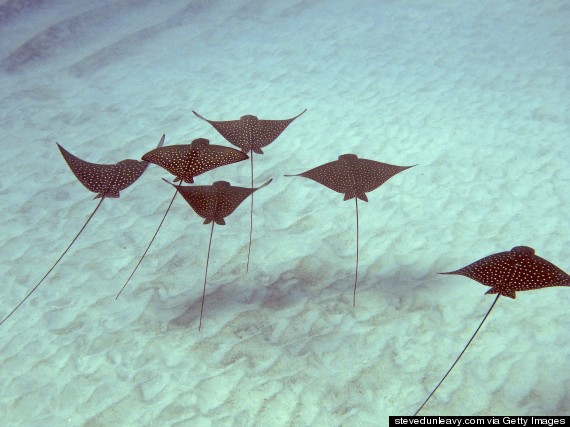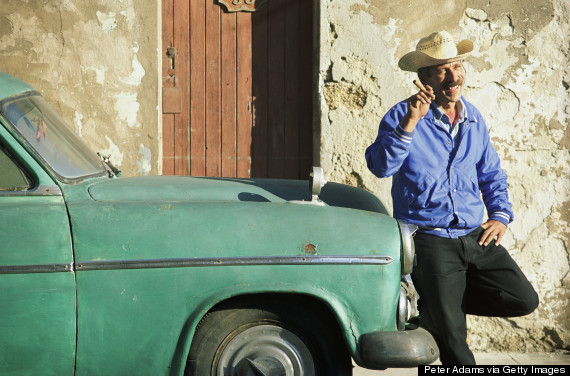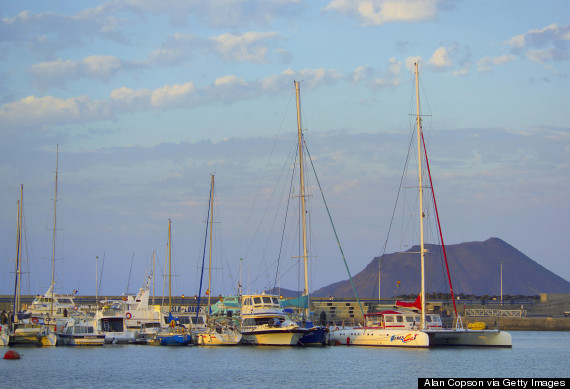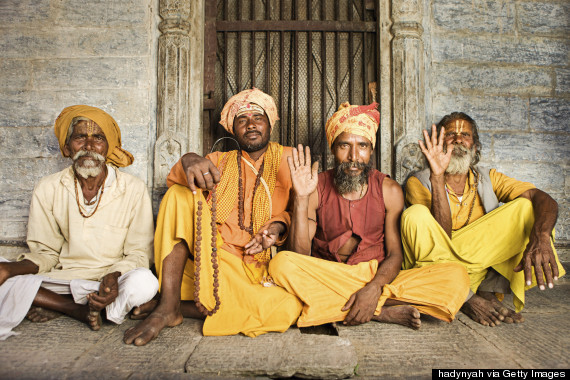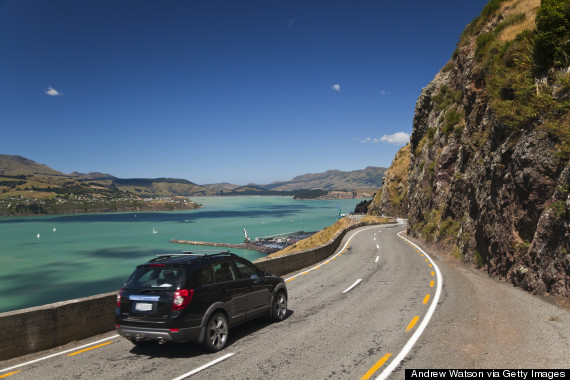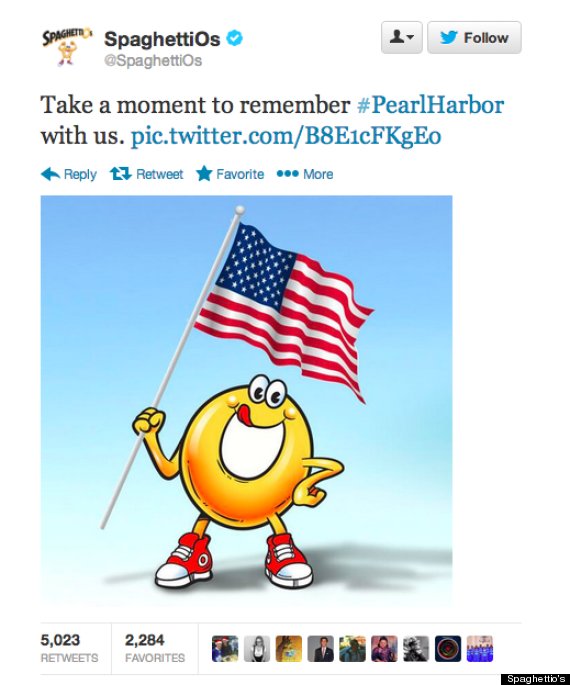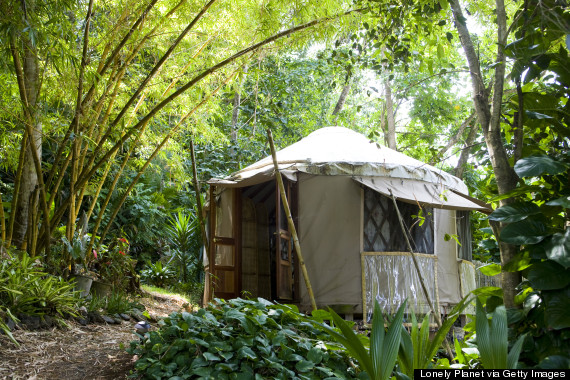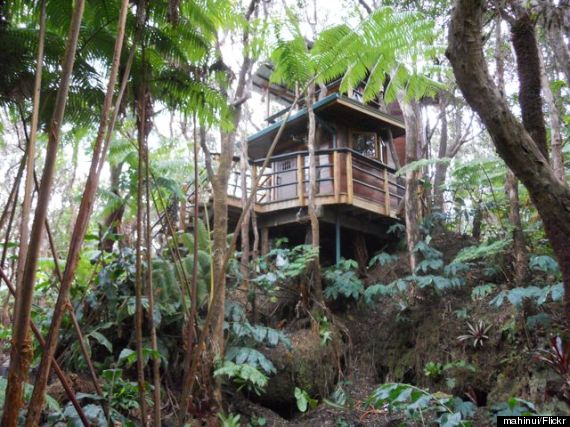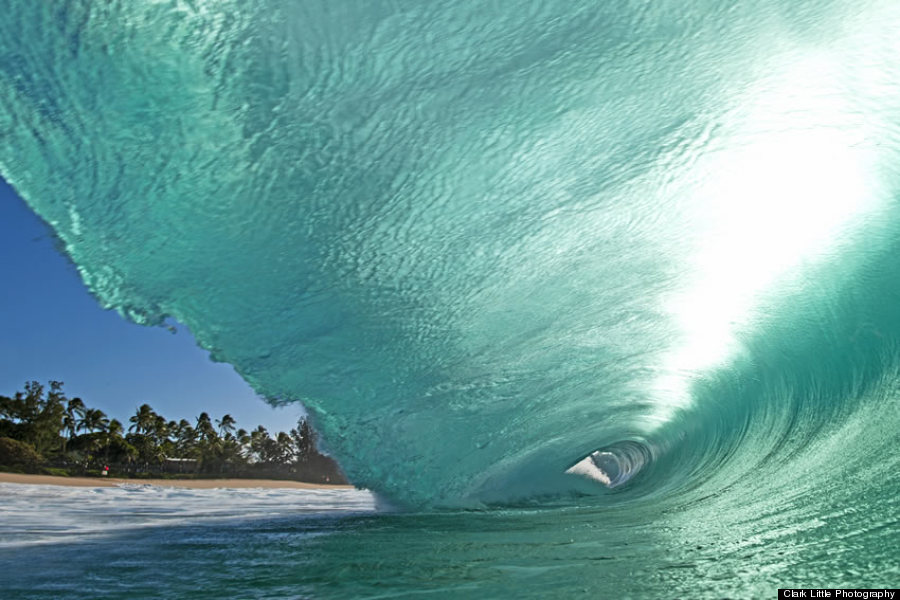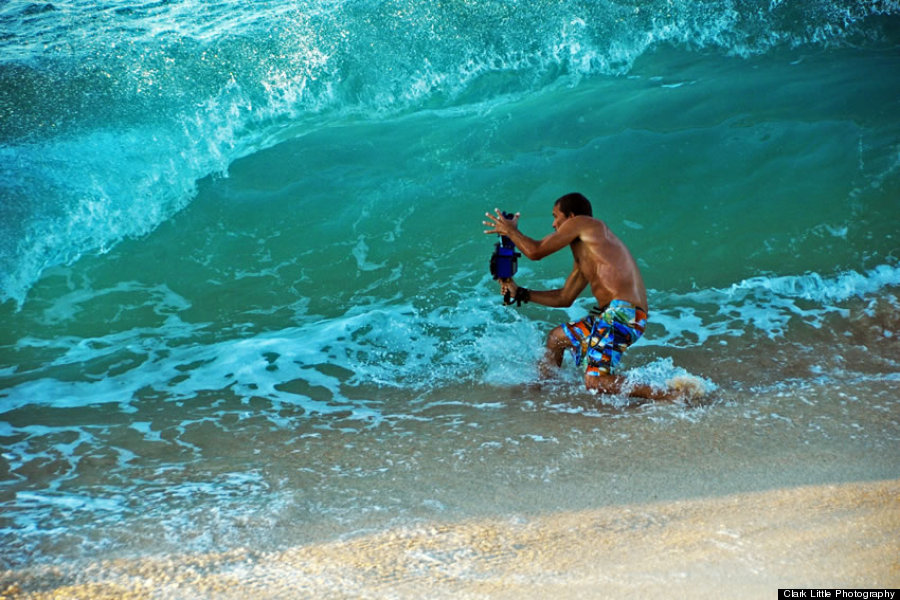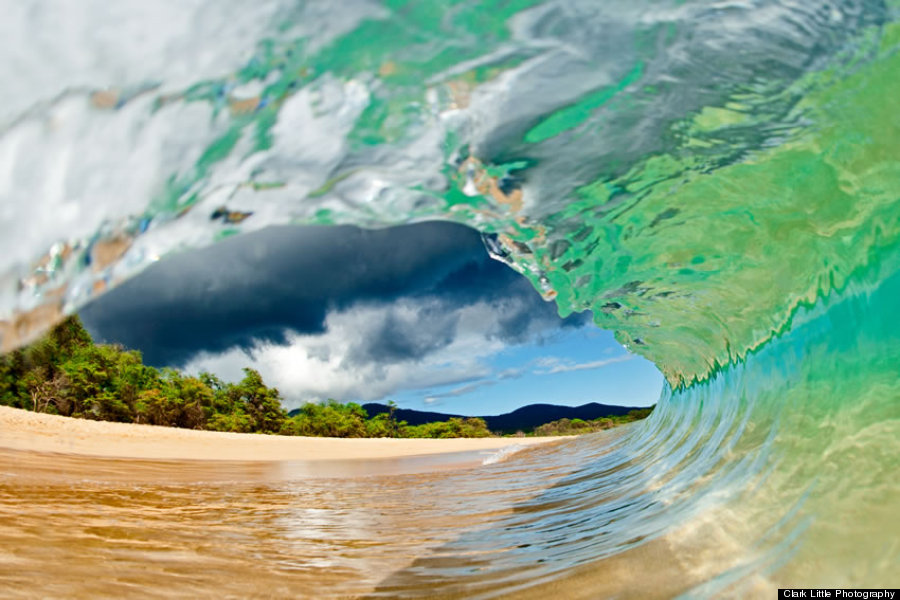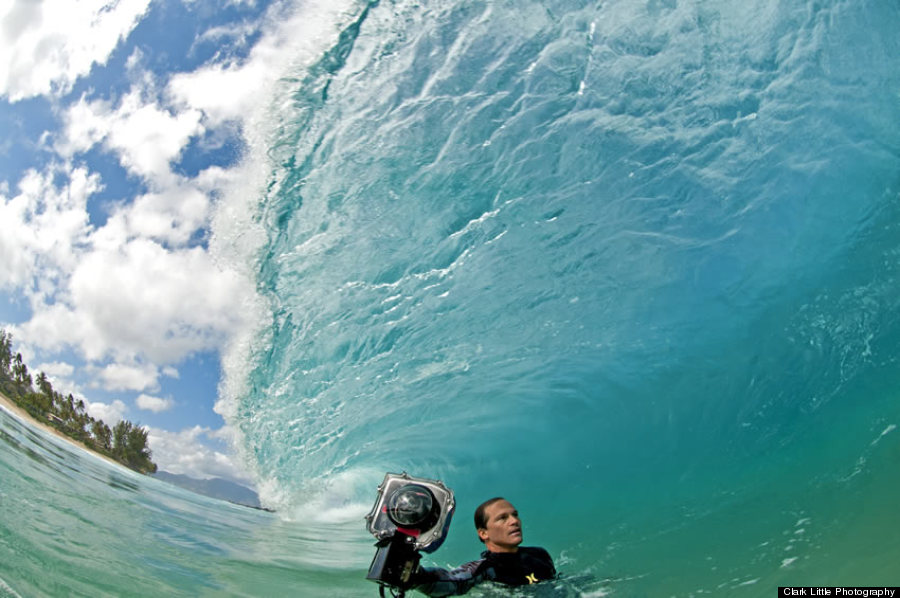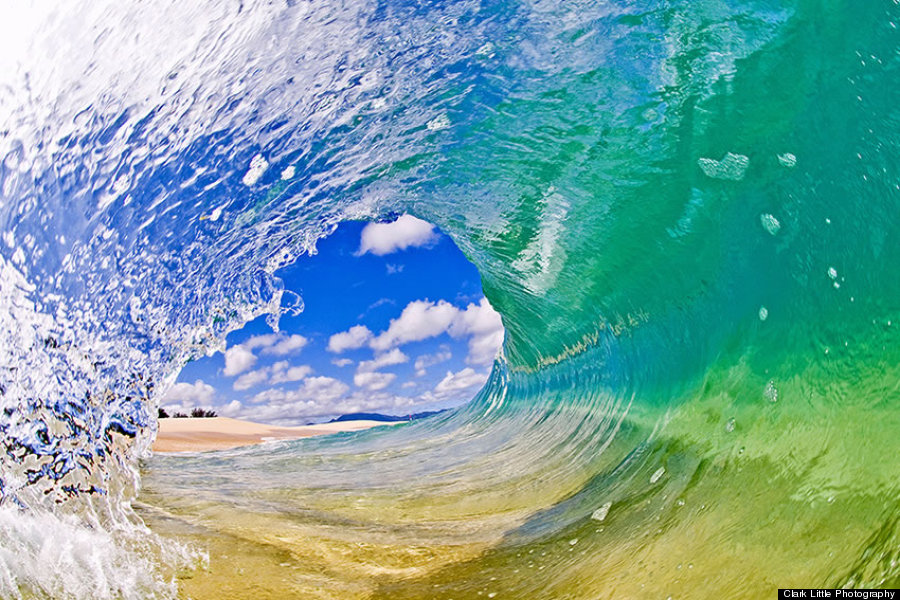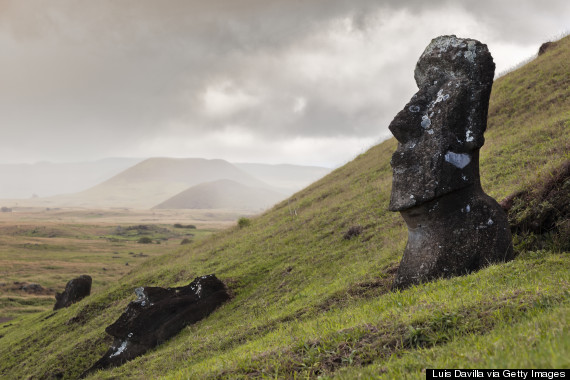Where you live could say a lot about your health habits -- and a new ranking reveals which states have it the best and worst.
On a whole, Americans are adopting healthier behaviors, such as stopping smoking and increasing physical activity, according to the report, published by the United Health Foundation, American Public Health Association and the Partnership for Prevention.
The report also shows that the percentage of smokers has dropped to 19.6 percent in the U.S. from 21.2 percent in the last year. And physical inactivity has dropped on a whole to 22.9 percent in the last year, down from 26.2 percent.
The findings are based on multiple sources of data, including the FBI, the American Medical Association, the Centers for Disease Control and Prevention, the U.S. Department of Education and the Census Bureau. Rankings are based on a number of criteria, including premature death, infant mortality, preventable hospitalizations, high school graduation rate, violent crime, health insurance, child poverty, obesity, diabetes, physical activity and immunizations.
Among other general findings:
- While 27.6 percent of adults are obese in the U.S., the percentage has not increased from the last year (it was 27.8 percent in 2012). The report also showed that 9.7 percent of adults have diabetes.
- The infant mortality rate has decreased 39 percent since 1990.
- Fewer people are dying from heart-related disease; cardiovascular deaths decreased 36 percent since 1990.
- Fewer people are also dying from cancer: Deaths from the disease decreased 3 percent since 1990.
Take a look at the list below to see the top 10 states and the bottom 10 states in the 2013 ranking:
Top 10:
1. Hawaii
![hawaii]()
- Fewer people in Hawaii are lighting up, with smoking prevalence decreasing to 14.6 percent of adults from 16.8 percent a year ago.
- Violent crime decreased from 287 offenses per 100,000 people, to 239 offenses per 100,000 people in the past year.
- The state boasts the country's lowest rate of preventable hospitalizations.
-Infant mortality decreased in the last year to 6.9 deaths for every 1,000 live births, from 7.7 deaths for every 1,000 live births.
- However, the state does have a high prevalence of binge drinking, as well as a low high school graduation rate.
- Hawaii also ranked first in the healthiest state ranking last year.
2. Vermont
- Smoking prevalence decreased to 16.5 percent from 19.1 percent a year ago.
- Deaths from heart-related disease decreased by 34 percent in the last 10 years in Vermont.
- The rate of violent crime is low and the high school graduation rate in Vermont is high compared to other states.
- Whooping cough incidence increased in this state over the past year, from 2.9 cases for every 100,000 people to 15.1 cases for every 100,000 people.
- Child poverty increased in this state in the last five years, going from 10.9 percent to 17 percent.
- Binge drinking increased in the state over the last year, to 19.3 percent of adults from 18.5 percent of adults.
3. Minnesota
- Minnesota boasts one of the lowest diabetes prevalences in the U.S., with 310,000 residents of this state having the condition.
- Deaths from heart-related disease dropped by 40 percent over the last 10 years.
- More adults in Minnesota are getting active, with physical inactivity dropping to 17.5 percent from 21.9 percent over the last year.
- Infant mortality decreased over the last two years, from 5.8 deaths per 1,000 births to 4.6 deaths per 1,000 births.
- However, child poverty has increased in this state over the last 10 years, increasing to 13.7 percent from 8.4 percent.
4. Massachusetts
![boston]()
- Smoking prevalence has gone down in this state over the last year, to 16.4 percent from 18.2 percent of adults.
- The adult obesity rate in Massachusetts is lower than most states in the country, at 22.9 percent.
- More and more people in this state are getting active: Physical inactivity prevalence decreased to 19.7 percent from 23.5 percent over the past year among adults.
- The rate of deaths from heart-related disease decreased by 33 percent in the last 10 years.
- However, the state still has high prevalences of binge drinking and preventable hospitalizations.
- Massachusetts also came in fourth in last year's ranking.
5. New Hampshire
- Fewer people in New Hampshire are smoking, with smoking prevalence decreasing to 17.2 percent of adults from 19.4 percent of adults in the past year.
- The four-year high school graduation rate has improved over the last 10 years, going up to 86.3 percent from 75.3 percent.
- The rate of deaths from heart-related disease decreased by 42 percent over the last 10 years.
- The rate of childhood poverty has increased in this state, to 10.9 percent from 6.5 percent in the last five years.
6. Utah
- Utah has the fewest smokers in the United States, with 10.6 percent of adults in the state being smokers.
- The death rate from drug-related reasons decreased in the last year, to 18.4 percent from 21.4 percent.
- Preventable hospitalizations decreased over the past 10 years by 29 percent.
- However, diabetes prevalence increased in the state in the past year, to 7.2 percent from 6.7 percent.
7. Connecticut
- More people in Connecticut are getting exercise, with physical inactivity decreasing over the past year to 22.1 percent from 25.5 percent.
- Fewer people in the state are uninsured, from 11.1 percent two years ago to 8.3 percent.
- The rate of deaths from heart-related disease decreased by 39 percent in the last 10 years.
- The high school graduation rate has decreased, from more than 80 percent between 2006 and 2011, to 75.1 percent now.
8. Colorado
![denver]()
- Colorado boasts the nation's lowest obesity rate: Just 20.5 percent of the population is obese.
- More teens are getting immunized, from 58.1 percent a year ago to 68.1 percent now.
- However, diabetes prevalence is increasing in the state: 7.4 percent from 6.7 percent a year ago.
- Air pollution levels in the state are lower than most of the country.
- The rate of deaths from heart-related disease decreased by 27 percent in the last 10 years.
9. North Dakota
- More North Dakotans are getting active, with physical inactivity dropping to 23.8 percent from 27.1 percent last year.
- More teens are getting immunized, with the immunization rate increasing to 72.8 percent in the past year, compared with 66.5 percent.
- Public health funding increased to $91 per person from $78 per person a year ago.
- However, the number of primary care providers has decreased in the last two years, to 116 per 100,000 people from 127 per 100,000 people.
- The state also has a high prevalence of binge drinking and obesity, compared with other states.
- The state dropped a place in the rankings from last year; in 2012, it came in as the eighth healthiest state.
10. New Jersey
- People in New Jersey are breathing better, as air pollution decreased by 37 percent in the past five years.
- Rate of deaths from heart-related ideas has decreased by one-third over the last 10 years.
- However, more people in New Jersey are smoking; smoking prevalence
increased in the last year by 3 percent.
- Obesity is also increasing in the state, with obesity prevalence increasing by 4 percent in the last year.
- Prevalence of diabetes also increased to 9.3 percent in the last year, from 8.8 percent.
Bottom 10:
41. Indiana
- A lot of people are still smoking in Indiana, as the state has one of the highest prevalences of the habit with 1.1 million smokers.
- More people in Indiana are exercising, with 25.9 percent of people being physically inactive in the past year compared with 29.2 percent.
- The high school graduation improved in the last two years, to 77.2 percent.
- A high number of adults in this state are obese and have diabetes; 1.5 million and half a million, respectively.
42. Tennessee
![memphis tennessee]()
- On the bright side, more people in Tennessee are exercising: Physical inactivity dropped to 28.6 percent of adults in the past year, from 35.1 percent.
- Violent crime has also decreased in the last 10 years, and the high school graduation rate has improved in the last five years.
- However, the child poverty rate has increased, with 26.2 percent of children living in poverty in the last year from 22.5 percent.
- The violent crime rate and smoking rate remain higher than many other states.
43. South Carolina
- Diabetes is very prevalent in South Carolina, with 11.6 percent of adults in the state having the condition.
- More than 1.1 million people in the state are obese.
- The high school graduation rate has improved in the past five years, rising from 60.1 percent to 68.2 percent.
- The rate of deaths from heart-related disease has decreased in the past 10 years by 34.5 percent.
- More people in South Carolina are getting active, with physical inactivity decreasing to 25 percent from 27.2 percent in the past year.
44. Oklahoma
- Nearly one-third of Oklahomans are obese (32.2 percent) and physically inactive (28.3 percent).
- Child poverty has increased in the state in the past 10 years, rising to 27.4 percent from 21.4 percent.
- Public health funding has decreased in Oklahoma to $80 per person from $113 per person in the past two years -- a decrease of 40 percent.
- Fortunately, fewer people in the state are smoking -- smoking prevalence decreased to 23.3 percent from 26.1 percent in the last year.
45. Kentucky
![kentucky]()
- The smoking rate is highest in this state, with 28.3 percent of adults being smokers.
- Obesity prevalence has increased in Kentucky in the past year, rising to 31.3 percent of adults from 30.4 percent of adults.
- Fewer children are getting immunized: just 68.2 percent of children ages 19 to 35 months were immunized, down from 77.6 percent in the past year.
- Child poverty levels are high: one in four kids lives in poverty now, compared with one in six kids in 2001.
- Fortunately, the high school graduation rate is improving, up more than 15 percent since 2003.
46. West Virginia
- West Virginia comes in second to Kentucky for most smokers, with 28.2 percent of adults being smokers.
- Obesity has increased in this state: In the past year, prevalence of obesity has increased to 33.8 percent from 32.4 percent.
- Thirty-one percent of adults in West Virginia are physically inactive.
- Fortunately, immunizations among teens are up to 56.1 percent in the past year, from 47.9 percent.
47. Alabama
![alabama]()
- One in four adults in Alabama is a smoker.
- Nearly a quarter of a million adults in Alabama has diabetes, 760,000 adults are obese and more than 690,000 adults are physically inactive.
- The number of days adults in Alabama report having "poor mental health" has increased to 4.7 days in the last 30 days, compared with 3.6 days in the last 30 days, over the last five years.
48. Louisiana
- Louisiana improved by one spot in the rankings from 2012; it ranked 49th healthiest last year.
- The number of people dying from drugs decreased in the past year, to 13.7 deaths per 100,000 people from 17.1 deaths per 100,000 people.
- More than one third of adults (34.7 percent) are obese in Louisiana.
- More than 1 million adults are physically inactive.
- Violent crime has decreased in the state by 12 percent in the past year.
- More than 30 percent of children live in poverty in Louisiana (the third year in a row).
49. Arkansas
- One in four people in Arkansas smokes.
- Levels of physical inactivity (760,000 adults), obesity (690,000 adults) and diabetes (nearly 125,000) are high in this state.
- The number of days adults in Arkansas report having "poor mental health" has increased to 4.7 days in the last 30 days, compared with 3.6 days in the last 30 days, over the last five years.
- The child poverty level is the highest in the state -- 29.6 percent -- since 1990 (when the rankings began).
- Fortunately, preventable hospitalizations have decreased in the past two years in this state.
50. Mississippi
- More than 500,000 people in Mississippi smoke (even though the smoking rate has technically declined 8.3 percent in the last year).
- Mississippi ranks last for new cases of infectious diseases, with 715 cases of chlamydia and 48.6 cases of Salmonella occurring per every 100,000 people.
- More than 770,000 adults are obese and nearly 280,000 have diabetes in the state.
- Exercise rates are low, with nearly 690,000 adults being physically inactive.
- The number of people who are uninsured has decreased by 25 percent in the last five years.
CORRECTION: A previous version of the article incorrectly said the high school graduation rate was low in Vermont. It is actually high compared to other states. The article has been corrected to reflect this change.




